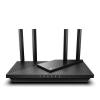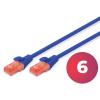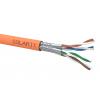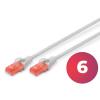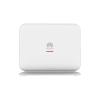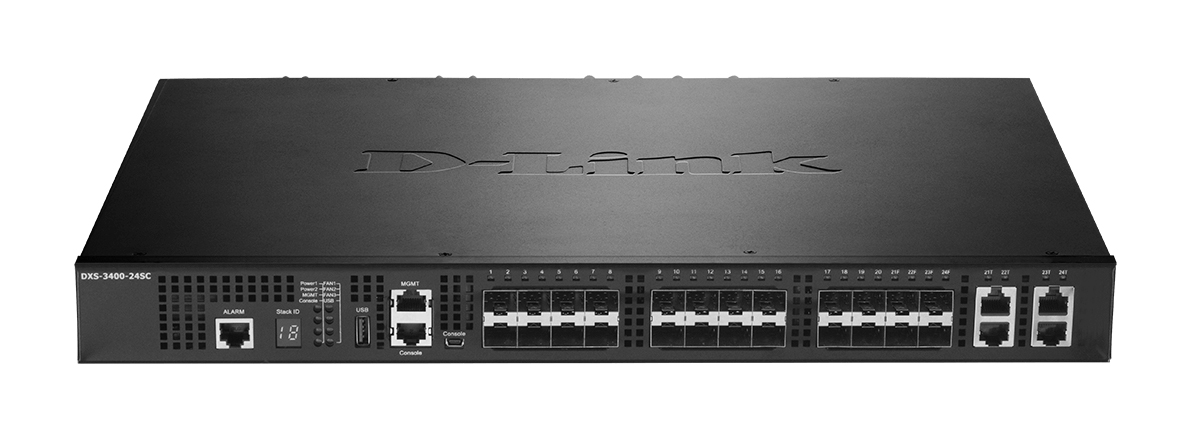-
€
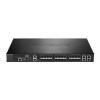
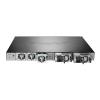
D-Link’s DXS-3400 Series Top-of-Rack 10 Gigabit Stackable Managed Switches are new, compact, high-performance switches that feature wire-speed 10-Gigabit Ethernet switching, routing, and ultra-low latency. The 1U height and high port density make the DXS-3400 Series suitable for enterprise and campus environments where space is at a premium. The DXS-3400 Series switches also include 20 10GBASE-T or 10G SFP+ ports and 4 10GBASE-T/SFP+ combo ports, making them suitable for datacenter, core, and distribution applications.
High Availability and Flexibility
The DXS-3400 Series switches feature a modular fan and power supply design for a high availability architecture. The hot-swappable design means that fans and power supplies can be replaced without affecting switch operation. Physical and virtual switch stacking allow the switches to be managed from a single IP address and provide redundancy for connected devices. The Switch Resource Management (SRM) feature allows the hardware table size to be changed, so that switch functions can be optimized based on the use of the switch. The DXS-3400 Series switches come with 3 modes: IP Mode, LAN Mode, and L2 VPN Mode, which modify the size of the Layer 2 and 3 tables for optimum efficiency.
Feature Rich Software
The DXS-3400 Series switches include feature rich software which satisfies the needs of Small Medium Business, Small Medium Enterprise, and campus users. It supports a wide range of Layer 2 and 3 functions such as VLANs, inter-VLAN routing, multicasting, Quality of Service (QoS), Virtual Router Redundancy Protocol (VRRP), Routing Information Protocol (RIP) v1/2, Next Generation RIP (RIPng), Policy-Based Routing (PBR), and security features. The DXS-3400 Series also includes an easy-to-use web interface and an industry standard CLI for improved management.
Lossless Ethernet
Data Center Bridging (DCB) is an essential set of enhancements to Ethernet for networking in data center environments. The DXS-3400 Series switches support several core components of Data Center Bridging (DCB) such as IEEE 802.1Qbb, IEEE 802.1Qaz, and IEEE 802.1Qau. IEEE 802.1Qbb (Priority-based Flow Control) provides flow control on specific priority to ensure there is no data-loss during network congestion. IEEE 802.1Qaz (Enhanced Transmission Selection) manages the allocation of bandwidth amongst different traffic classes. IEEE 802.1Qau (Congestion Notification) provides congestion management for data flows within network domains to avoid congestion.
Energy Efficient
The DXS-3400 Series switches feature front-to-back airflow which facilitates the building of energy-efficient data centers. The front-to-back airflow optimizes air circulation inside the rack, allowing hot and cold isles in data centers, increasing energy efficiency in comparison to a mix of front-to-back and side-to-side airflow. The switches also feature in-built smart fans; internal heat sensors monitor and detect temperature changes, and react accordingly by utilizing different fan speeds for different temperatures. At lower temperatures, the fans will run more slowly, reducing the switch’s power consumption and noise.
Features
High Availability and Flexibility
- Two AC hot-swappable power modules for 1+1 redundancy and load sharing
- Three hot-swappable fan trays provide N+1 cooling redundancy
- Physical stacking via four 10G ports, can stack up to 4 devices
- Ethernet Ring Protection Switching (ERPS)
- Switch Resource Management (SRM) for flexible management of system resources
Lossless Ethernet via Data Center Bridging (DCB)
- IEEE 802.1Qbb Priority-based Flow Control (PFC)
- IEEE 802.1Qaz Enhanced Transmission Selection (ETS)
- IEEE 802.1Qau Congestion Notification (CN)
Traffic Monitoring & Bandwidth Control
- Port mirroring/Bandwidth Control
- Broadcast/Multicast/Unicast storm control
- Single Rate Three Color Marker (srTCM)
- Two Rate Three Color Marker (trTCM)
Easy Management
- RJ-45/Mini-USB console port
- Management and alarm ports
- USB port for firmware and configuration files
- Easy-to-use Web GUI
- Industry-standard CLI
The product includes only 1 AC power supply module!
Specifications
| DXS-3400-24SC | |
| General | |
|---|---|
| Interfaces |
20 10G SFP+ ports |
| Console Port | RJ-45 and Mini USB console ports for out-of-band CLI management |
| Management Port | 10/100/1000BASE-T RJ-45 Ethernet for out-of-band IP management |
| USB Port | 1 |
| Performance | |
| Switching Capacity | 480 Gb/s |
| Max. Forwarding Rate | 357,12 Mp/s |
| Packet Buffer Memory | 4 MB |
| MAC Address Table | 48K |
| Physical | |
| Power Input | 100 - 240 V AC |
| Maximum Power Consumption | 118,6 W |
| Standby Power Consumption | 64,8 W |
| Heat Dissipation (Max.) | 388.39 BTU/hr |
| Dimensions (W x D x H) | 441 x 44 x 380 mm (17.32 x 1.73 x 14.96 inches) |
| Weight | 7.45 kg (16.42 lbs) (2 PSUs, 3 fan modules) 6.5 kg (14.33 lbs) (1 PSU, 3 fan modules) 5.1 kg (11.24 lbs) (no PSU or fan modules) |
| Operating Temperature | -5 to 50 °C (32 to 113 °F) |
| Storage Temperature | -40 to 70 °C (-40 to 158 °F) |
| Operating Humidity | 0% to 95% RH |
|
Storage Humidity |
0% to 95% RH |
| Certifications | |
| Safety | cUL, CB, CE, CCC, BSMI |
| EMI / EMC | CE, FCC, C-Tick, VCCI, BSMI, CCC |
| Software Features | |
| Stackability |
Physical Stacking
Virtual stacking/clustering of up to 32 units
|
| L2 Features | MAC Address Table
Port mirroring
L2 protocol tunneling Loopback Detection (LBD) iSCSI awareness Multi-Chassis Link Aggregation (MLAG) |
| L2 Multicast Features | MLD Snooping
|
| L3 Features | ARP
IPv6 Neighbor Discovery (ND) UDP helper IPv6 tunneling
VRRP v2/v3 |
| L3 Routing | Static routing
Policy-based Route (PBR) Null route Bidirectional Forwarding Detection (BFD)
RIP
Route Redistribution
|
| VLAN | 802.1Q 802.1v Double VLAN (Q-in-Q)
Port-based VLAN MAC-based VLAN Subnet-based VLAN Private VLAN VLAN group
Voice VLAN Auto Surveilliance VLAN VLAN trunking GVRP
|
| AAA | 802.1X authentication
Web-based Access Control (WAC)
Microsoft NAP
Authentication Database Failover Guest VLAN |
| Quality of Service (QoS) | 802.1p Quality of Service 8 queues per port QoS based on
|
| Data Center Bridging (DSB) | 802.1Qbb Priority-based Flow Control (PFC) 802.1Qaz Enhanced Transmission Selection (ETS) 802.1Qau Congestion Notification (CN) |
| Access Control List (ACL) | ACL based on:
|
| Security | Port Security
D-Link Safeguard Engine DHCP server screening IP-MAC-Port Binding Dynamic ARP Inspection IP Source Guard DHCP Snooping IPv6 Snooping DHCPv6 Guard IPv6 Route Advertisement (RA) Guard IPv6 ND Inspection ARP Spoofing Prevention
L3 Control Packet Filtering Traffic Segmentation SSL
DoS attack prevention |
| Operations, Administration, and Maintenance (OAM) |
Cable diagnostics 802.3ah Ethernet link OAM D-Link Unidirectional Link Detection (DULD) Dying Gasp 802.1ag Connectivity Fault Management (CFM) Y.1731 OAM Optical Transceiver Digital Diagnostic Monitoring (DDM) |
| Management | Web-based GUI CLI Telnet server Telnet client TFTP client FTP client Secure FTP (SFTP) server Traffic monitoring SNMP
System log DHCP client DHCP server DHCP Relay options 60, 61, 82 Multiple images Multiple configurations Flash file system DNS client CPU monitoring MTU setting ICMP tools
DNS Relay SMTP DHCP Auto Configuration NTP RCP (Remote Copy Protocol) RMON v1/v2 Trusted host Password encryption Debug command sFlow Switch Resource Management (SRM) Microsoft Network Load Balancing (NLB) |
| Standards | |
| MIB & RFC Standards | MIB Structure: RFC1065, RFC1066, RFC1155, RFC1156, RFC2578 Concise MIB Definitions: RFC1212 MIBII: RFC1213 MIB Traps Convention: RFC1215 Bridge MIB: RFC1493, RFC4188 SNMP MIB: RFC1157, RFC2571, RFC2572, RFC2573, RFC2574, RFC2575, RFC2576 SNMPv2 MIB: RFC1442, RFC1901, RFC1902, RFC1903, RFC1904, RFC1905, RFC1906, RFC1907, RFC1908, RFC2578, RFC3418, RFC3636 RMON MIB: RFC271, RFC1757, RFC2819 RMONv2 MIB: RFC2021 Ether-like MIB: RFC1398, RFC1643, RFC1650, RFC2358, RFC2665, RFC3635 802.3 MAU MIB: RFC2668 802.1p MIB: RFC2674, RFC4363 Interface Group MIB: RFC2863 RADIUS Authentication Client MIB: RFC2618 MIB for TCP: RFC4022 MIB for UDP: RFC4113 MIB for Diffserv.: RFC3298 RADIUS Accounting Client MIB: RFC2620 Ping & TRACEROUTE MIB: RFC2925 Running configuration writes and backup (D-Link MIB) TFTP uploads and downloads (D-Link MIB) Trap MIB (D-Link MIB) IPv6 MIB: RFC2465 ICMPv6 MIB: RFC2466 Entity MIB: RFC2737 VRRP MIB: RFC2787 RIPv2 MIB: RFC1724 OSPF MIB: RFC1850 IPv4 Multicast Routing MIB: RFC5132, RFC2932 PIM MIB for IPv4: RFC2934 IP Forwarding Table MIB: RFC4292 IPv6 SNMP Mgmt Interface MIB: RFC4293 DDM MIB (D-Link MIB) Private MIB (D-Link MIB) DIFFSERV MIB (D-Link MIB) MIB for D-Link Zone Defense (D-Link MIB) IP: RFC791 UDP: RFC768 TCP: RFC793 ICMPv4: RFC792 ICMPv6: RFC2463, RFC4443 Extended ICMP to Support Multi-Part Messages: RFC4884 ARP: RFC826 CIDR: RFC1338, RFC1519 Definition of the DS Field in the IPv4 and IPv6 Headers: RFC2474, RFC3168, RFC3260 Extensible Authentication Protocol (EAP): RFC1321, RFC2284, RFC2865, RFC2716, RFC1759, RFC3580, RFC3748 SNMP Framework: RFC2571 SNMP Message Processing and Dispatching: RFC2572 SNMP Applications: RFC2573 User-based Security Model for SNMPv3: RFC2574 Expedited Forwarding PHB (Per-Hop Behavior): RFC3246 Supplemental Information for the New Definition of the EF PHB (Expedited Forwarding Per-Hop Behavior): RFC3247 DNS extension support for IPv6: RFC1886 Path MTU Discovery for IPv6: RFC1981 IPv6: RFC2460 Neighbor Discovery for IPv6: RFC2461, RFC4861 IPv6 Stateless Address Auto-configuration: RFC2462, RFC4862 IPv6 over Ethernet and definition: RFC2464 Dual Stack Hosts using the “Bump-In-the-Stack” Technology: RFC2767 IPv6 Addressing Architecture: RFC3513, RFC4291 IPv4/IPv6 dual stack function: RFC2893, RFC4213 Default Address Selection for Internet Protocol version 6: RFC3484 IP-IP tunnel: IP Encapsulation within IP: RFC2003 IP-IP tunnel:Allow MTU = 1500 or 1520: RFC1191 L2 distributed tunnel - CAPWAP Encapsulation: RFC5415 |






 Polski
Polski English
English Italiano
Italiano Español
Español Čeština
Čeština Српски
Српски Deutsch
Deutsch Ελληνικά
Ελληνικά Slovenský
Slovenský

